Heraklion (also Iraklion or Herakleion) is the capital and largest city of Crete, Greece. It is the capital of the Heraklion regional unit. It is also the seat of the Ecumenical Patriarchate of Constantinople and the Archdiocese of Crete. The municipality of Heraklion, as it was formed by the Kallikratis Programme, is the fourth most populous in the country, with a population of 173,993 (2011 census). The population of the city of Heraklion is 140,730 (2011 census).
Etymology
The city has changed names many times throughout its long history, with more than one name being used at the same time. The history of Heraklion is divided into 8 periods, and it was named differently in each period. Some of the most important names are:
- Heraklion (Roman period, Ottoman Empire, Cretan State, Greece)
- Heraclea
- Kastro (East Roman Empire – Byzantine)
- Rabḍ al-ḫandaq (Arabs)
- Chandax (Byzantines during the Arab period)
- Megalo Kastro (Cretans)
- Candida (Latins)
- Candia (Venetians, Europeans)
The name “Kastro” (Greek for ‘castle’) was given during the 1st Byzantine period (330-824 AD), indicating that it had been fortified, as this is what the Byzantines called fortified cities. When other castles were built in Crete during the 2nd Byzantine period, the castle of Heraklion was the largest and the only one organized as an urban settlement, and it also had an organized port, so it became known as the “Megalo Kastro” (Big Castle). The Andalusian exiles built a strong fortress which became known as the Rabḍ al-ḫandaq (Fortress of the Ditch). Because of this name, the settlement is referred to in Greek-language sources as Chandax, while in Frankish sources it is referred to as Candia and later by the Ottomans as Kandiye.
The city was named Heraclea again in 1822 by Michael Afentoulief, who was appointed commissioner of Crete during the Greek War of Independence, but during the 19th century the name Heraklion prevailed and eventually became established.
Geography
Heraklion is located on the north coast of central Crete, opposite the island of Dia, in the Gulf of Heraklion. The Heraklion coastline is characterized by the existence of small hills a few tens of meters high and small plains. Inland, to the south, is the plain of Heraklion, which is divided in two by Mount Juktas.
Historical periods
Prehistory and antiquity
Heraklion is located on the same spot where the westernmost of the three harbors of Knossos was located in antiquity. Knossos is about 5 km southeast of Heraklion. Habitation at Knossos began in the 7th millennium BC and by the end of the Late Neolithic period it had reached 1,000-2,000 inhabitants. It continued to develop in the Bronze Age and became the most important center of the Minoan population. Afterwards, after the 15th century, it seems to have declined to experience a new period of prosperity during the Hellenistic period. The northern cemetery of Knossos has been identified in the area of Agios Ioannis.
There is no accurate information about the foundation of the city of Heraklion. It was first inhabited as a harbor of Knossos at the mouth of the Kairatos River, which also passes through Knossos. The settlement is considered to have started at least from the 3rd millennium BC, with the oldest finds from the pre-palace periods showing the presence of an already developed settlement. Cycladic-type ceramics were also found, indicating relations with the Cyclades already from that period.
The Poros-Katsampas area has yielded rich finds. Rescue excavations from the beginning of the 20th century onwards have brought to light remains of the Minoan settlement. Tombs of the post-Minoan period III have been found, and unspoiled carved tombs have also been found. The Minoan settlement reached its maximum extent during the new palace period, when a large number of workshops were also operating. After its abandonment, the main cemetery of the settlement was moved to the Katsampas area. The new settlement was destroyed by fire, but rebuilt. It is completely abandoned after the YM IIIG period.
Later finds have been found in various areas. Tombs of the Geometric period have been found. Traces of habitation have been found during the Classical, Hellenistic and Roman periods on the natural hill where the Archaeological Museum is located today. In the excavation carried out in 1991-1993 during the northern extension of the Archaeological Museum, a Roman house with mosaics was found. A Roman coin of 169 AD was found. Protogeometric period pottery shards from the 10th-9th centuries BC have been found.
The earliest testimony we have is from the ancient historian and geographer Strabo (1st century BC), in his Geography (X, 476, 7) “…Knossos has Heraklion as its port”. Pliny the Elder in 79 AD refers to the city as “Heraclea”. Claudius Ptolemy (2nd century AD) also mentions the city, as Heraklion. Two of the Ten Saints who were martyred in 249-251 were from Heraklion. In 348, in the Stadiasmus Maris Magni, the distance between Astali (Bali) and Heraklion and between Heraklion and Cherronesos (Chersonisos) is mentioned.
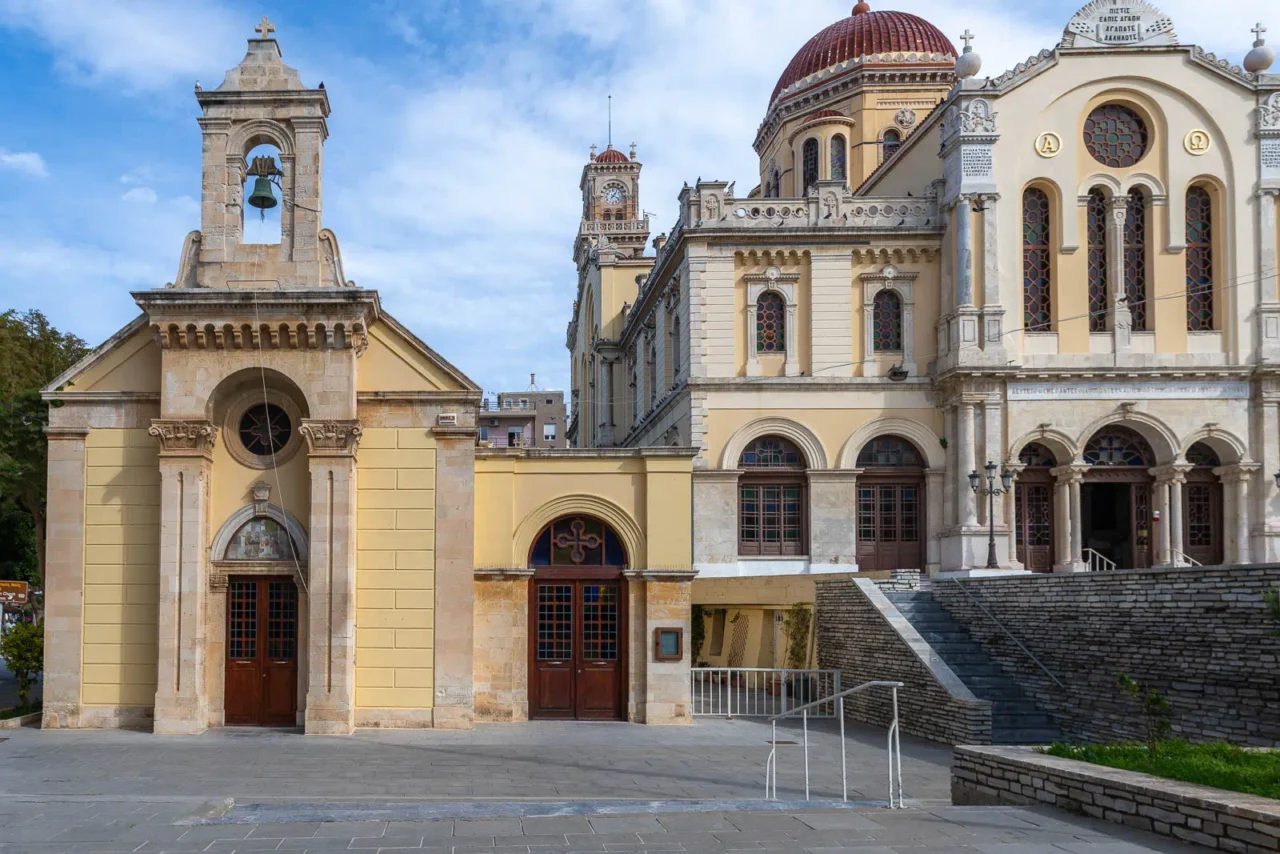
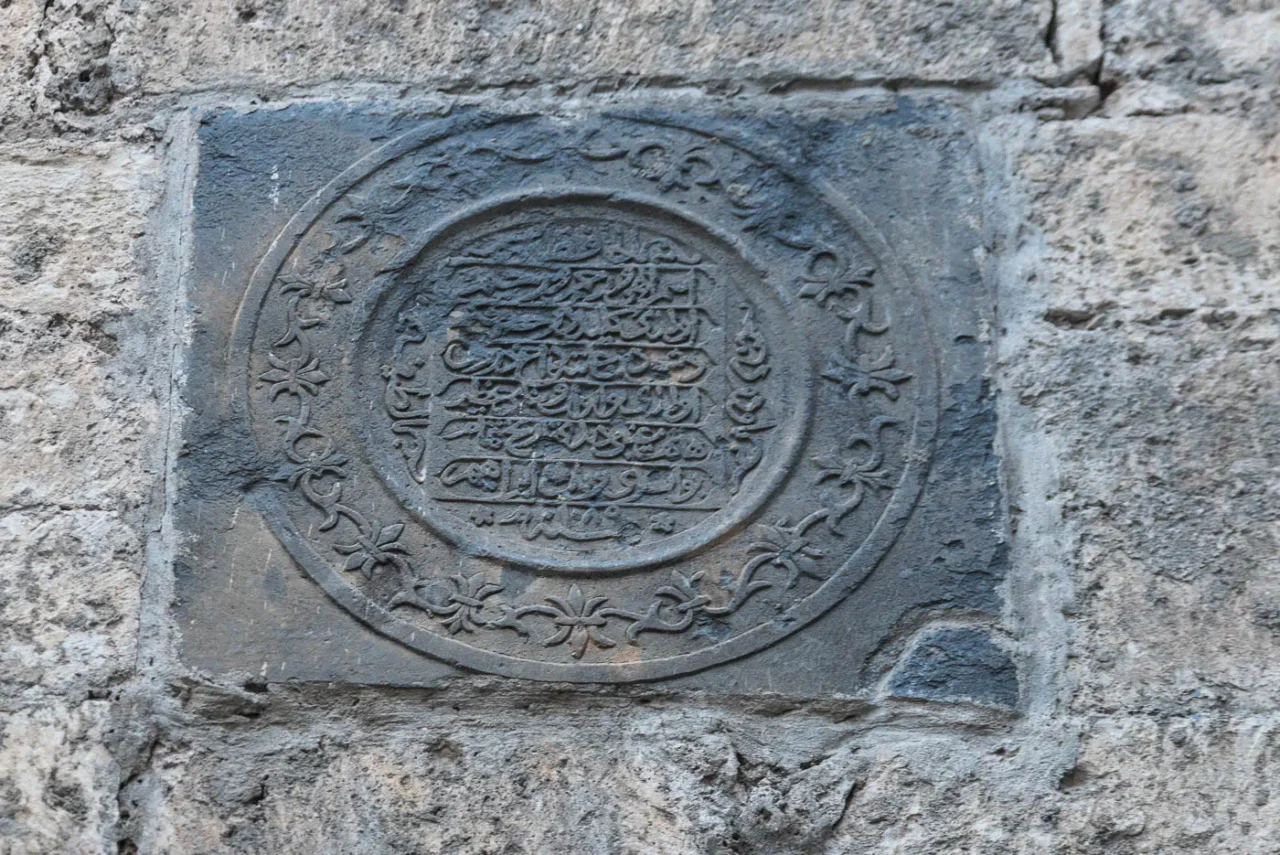
Byzantine Periods and Arab Period
Heraklion continued to be inhabited during the late Roman period, when Gortyn was the capital of Crete. A 5th-century funerary stele in Gortyn dedicated to a certain Theoktistos states that he was born in Heraklion and died in Gortyn. Heraklion is not mentioned in the Synecdemus of Hierocles, which states that Knossos was the seat of a bishop, but it is mentioned by Stephanus Byzantius as Heraclea, as well as in the 7th-century Ravenna Cosmography. It was a small but fortified city, however, there is not much information. In the Agia Aikaterini area, remains of the 1st Byzantine or Roman wall have been found. In 1960, an inscription was found there, in the port zone of the old wall, which has been identified as a boundary stone and perhaps refers to the repulse of an Arab raid. The inscription has been dated from the late 7th to the early 9th century, both on the basis of what is written and on the basis of its decoration. In the minutes of the 2nd Ecumenical Council of Nicaea, among the signatures of the bishops of Lambi and Knossos is that of the bishop of Heracleopolis, although the identification of this bishopric with Heraklion has been disputed. However, evidence suggests that Heraklion developed from the 7th century onwards, after the loss of Egypt and the increased role of Constantinople both economically and commercially in the Byzantine Empire, thanks to its location on the north coast of Crete. It is likely that in the 8th century the seat of the ruler of Crete was moved from Gortyn to Heraklion or Knossos.
In 823, Arab Saracens under Abu Hafs Omar, originating from Andalusia in present-day Spain after years of wandering occupied Crete, taking advantage of the fact that the Byzantine fleet was facing the rebellion of Thomas the Slav, establishing the Emirate of Crete. The Arabs chose Heraklion as their capital, which they began to fortify the following year, 824, strengthening and extending the earlier Hellenistic and Byzantine walls further west as the city expanded. They built a large fort, part of which survives to this day, with a large moat around it. They named the city “Rabḍ al-ḫandaq” (Fortress of the Ditch), or more simply Chandax. This fortress had the sea on one side, which provided it with security, while its other sides were founded on rocky surfaces and had a stone base-foundation. The main part of the fortification was built of bricks “…made of earth and goat and pig hair put together and fairly compacted”. At the level of the battlements, the width was such that two chariots could run on it at the same time, moving in opposite directions. Finally, the fortress had towers and straight sections in between, while two deep and wide ditches surrounded it. Arabic coins of good quality have been found in excavations.
The Saracens allowed pirates to camp in the port, which was common at that time, but created many problems and annoyed the Byzantine Empire. The continuous piracy of the Saracens based in Chandax was a constant danger to the cities and islands of the Aegean, and in fact the Arabs conquered some of them. Naturally, Byzantine policy focused its interest on the reconquest of Crete. After some failed attempts, the Empire decided to finish with the matter of Crete. During the reign of Romanos II, the magistros and strategos Nikephoros Phokas, the later emperor, was assigned the preparation and leadership of the campaign.
Thus, the Byzantines assembled a large fleet and in July 960 landed in the Gulf of Heraklion, 3 km west of the city, forcing the Arabs to retreat behind the walls of Chandax. An eight-month siege ensued, and on March 6, 961, they captured the city. The forces of Nikephoros Phokas, proceeding to massacres, looted and burned the city, putting an end to the Emirate of Crete. Initially, the capital of Crete was moved to the fortified hill near today’s Prophet Elias, which became known as Temenos. However, the new location did not serve the needs of a city, so the settlement began again in the ruins of the Arab city, and they Hellenized its name to Chandax. Nikephoros Phokas reorganized the administrative, military and religious ties of Crete, which was organized into an independent thema (province). The administration of Crete was undertaken by the doux (duke) or katepano. Chandax eventually concentrated the military and naval forces of Crete. Also, Chandax seems to have been the only settlement in Crete that acquired an urban organization during the 2nd Byzantine period, despite the general period of development. It had an organized port and was protected by a wall. It was also a metropolitan see. Around the same time, the church of Agios Titos (first bishop of Crete) was built, which had been previously destroyed by the Saracens.
Venetian Period
In 1204, shortly before the fall of Constantinople to the Crusaders, part of Crete was initially granted to Boniface of Montferrat by Alexios IV Angelos. Boniface of Montferrat ceded (sold) Crete to the Venetians on August 12, 1204 (to Doge Enrico Dandolo). However, before the Venetians could settle in Crete and its capital Chandax, the Genoese with Enrico Pescatore rushed and occupied it, but the Venetians eventually managed to expel them after a war that followed, from 1206 to 1211. The Venetians, establishing a feudal and at the same time democratic system of government, according to their own standards, retained Chandax as the capital of the island and the seat of the Duke, the governor general of the Most Serene Republic, paraphrasing the name of the city into “Kantika”, “Kantiga”, “Kantida” and finally Candia, as it prevailed and became the name of the island with the official name “Kingdom or Duchy of Candia”.
The Venetians then erected important buildings with which they adorned the city, such as the Ducal Palace, the Palace of the Captain General, the Palace of the Admiral, the Palace of the Latin Archbishop, the church of St. Mark, as well as other churches, such as St. Francis, Our Lady of the Crusaders, etc. (more than 120 in total), the Venetian Club (which was demolished in 1904 and later restored), the so-called Morosini Fountain (aqueduct), the Orthodox church of St. Catherine with the Sinai School of Scholars and Painters, etc. However, the most important Venetian project was the famous great wall of Heraklion, or the Venetian Walls of Heraklion, which surrounded the entire city, as it had developed in the meantime, making it the strongest fortress in the Eastern Mediterranean. Initially, the Venetians improved the existing Arab and Byzantine fortifications, but the great earthquake of 1303 and the discovery of gunpowder forced them to build this new wall, up to 40 meters thick in places, with seven bastions and seven gates, being a perfect work of fortification. Its construction began after the Fall of Constantinople (1453), in the year 1462. During its construction, in 1508, another major earthquake occurred. The project was finally completed after 108 years, in 1570, by a Venetian engineer. Most of it survives to this day.
Another very important project of the Venetians was the construction of the great port of Chandax, which was created on the site of the ancient Minoan and later Byzantine and Arab harbor. The construction of the port began in 1523 and was completed 17 years later, in 1540. The port had two breakwaters, the largest to the right of the entrance, at the end of which was built a large tower called the “Tower of the Lion”, or “Megalo Kastelli”, or “Rocca”, which survives to this day with the Turkish name Koules. The smaller breakwater, to the left of the entrance, ended in the Small Koules. At the end of the harbor, 12 shipyards were built for the construction, repair and storage of Venetian ships, their equipment and supplies, some of which survive to this day.
With the above basic projects of the Venetians, as well as others that concerned both the beautification of the city and the new administrative measures that were introduced in parallel, Chandax soon developed into a major commercial center and acquired such prestige that it had never known before. From its port, the largest artificial port that had been built until then in the Eastern Mediterranean, all of Crete’s trade was carried out, mainly export trade to Europe and Asia, thus revealing the great commercial organization of the city, even reaching the point of being characterized as the “soul of Venice”.
By the middle of the Venetian period, Chandax already concentrated almost 2/5 of the total population of Crete. According to the systematic recording of the population of the Great Island undertaken by Pietro Castrofilaca, the district of Chandax, one of the four that the Venetians had created, numbered, in the year 1575, 84,158 inhabitants, compared to 48,790 in Chania, 46,400 in Rethymno and 22,312 in Sitia. The main inhabitants of Chandax were the Venetian settlers, nobles and other Latin state officials as well as merchants, native Greeks, for the most part, but also settlers from other areas of the Venetian possessions as well as some Jewish merchants. It is noted that the population of Crete at that time fluctuated due to various causes such as epidemics but also due to the settlement of Greeks, which occurred recently, from other Venetian possessions that were occupied by the Ottomans. The city had approximately 25,000 inhabitants within the walls and 5,000 outside the walls.
In 1647 AD, the siege of the city by the Ottoman Turks began, which lasted 22 years and cost the lives of 30,000 Cretans, Venetians and Europeans and 120,000 Ottomans and finally ended with the surrender and capitulation of the city in 1669, to Köprülü Fazıl Ahmed Pasha.
The siege of Heraklion, for the defense of which all the Christian states of the time joined forces (under the orders of the Pope of Rome), is the longest in duration and without interruption that has been recorded in world history, remaining in history as an epic, with the title “Siege of Candia” (Great Cretan War).
After the surrender (September 6, 1669), almost all the inhabitants of the city left and as refugees migrated to the Ionian Islands, Venice, Dalmatia, etc.
Ottoman Period
The city was destroyed immediately after the conquest, but the Ottomans chose it as their new capital. During the Ottoman period, the city was also known as “Megalo Kastro” or “
Kastro”. The enraged Turks massacred the Metropolitan of Crete, Gerasimos Pardalis, and five bishops: Neophytos of Knossos, Joachim of Chersonissos, Hierotheos of Lambi, Zacharias of Sitia and the titular Bishop of Diopolis Kallinikos. For two or more years the Church of Crete remained headless. Due to the constant revolutions and the continuous demand for union with the newly formed state of Greece, the declining Ottoman Empire ceded (sold) Crete in 1830 to Egypt, under which it remained until 1841. This period was more peaceful and many public works were carried out. In 1851, the capital was moved by the Ottoman administration from Heraklion to Chania for defensive reasons (port of Souda), due to the great pressure that the Ottoman Empire was receiving.
In 1856, Heraklion was leveled by an earthquake. Of the 3,620 houses in the city, only 18 were deemed suitable for habitation.
Cretan State
The Cretans, unable to endure the Turkish occupation, revolted repeatedly, with major uprisings in 1770, 1821, 1841, 1858, 1866-1869 and 1897-1898. In 1897, the fleets of Great Britain, France, Russia and Italy sailed to Crete, dividing the administration of the island. The administration of Heraklion was undertaken by the British. On August 25, 1898, an attempt was made by a detachment of Englishmen to put the employees of the executive in their positions according to the decision of the four admirals, but the Turks of the city reacted and, enraged, proceeded to massacre Christians of the city, looting and finally setting fire to part of the city. To stop the revolt, a British ship bombarded the city. Among the dead were Lysimachos Kalokairinos, British vice-consul in Heraklion, and 18 British soldiers, while the total number of dead was initially estimated at 1,000 people, but later estimates put it at around 450 dead. 17 leading Turcocretans were sentenced to death for the incidents, while the Great Powers forced the removal of the Turkish army, which was also the final one. In December 1913, the union of Crete with Greece was officially declared. Thus, Crete is now an integral part of the Greek state.
Settlement of Asia Minor Greeks
After the Asia Minor Disaster of 1922 and the exchange of populations, Greek refugees from Asia Minor settled in Heraklion, enriching the local culture. They came from various regions of Asia Minor, most of them from Smyrna, Vourla, Alatsata, Nymphaio of Ionia, the region of Iconium, Prousa, etc. Also, among the arriving families of Greek refugees were also several from Eastern Thrace. They created the settlements that bear the names of the cities of Asia Minor from which they originated, such as Nea Clazomenes, Nea Alikarnassos, Nea Alatsata, Nea Vryoula. The reception of the refugees by the Cretans was hospitable and the coexistence peaceful.
Population
The population of the city of Heraklion, according to the censuses, is as follows:
Census |
Population |
|---|---|
1583 |
20,744 |
1834 |
12,000 |
1891 |
20,958 |
1900 |
19,582 |
1928 |
33,404 |
1951 |
51,144 |
1961 |
63,458 |
1971 |
77,506 |
1981 |
101,634 |
1991 |
115,124 |
2001 |
130,914 |
2011 |
140,730 |
2021 |
149,501 |
City Key Points
- Historical References: Strabo, Pliny the Elder, Claudius Ptolemy, Stephanus Byzantius
- Location: North coast of central Crete, opposite the island of Dia, in the Gulf of Heraklion
- Historical Significance: Heraklion has been a major urban center since the Minoan period, serving as a harbor for Knossos. It was an important center during the 1st and 2nd Byzantine periods, the Arab period, the Venetian period, and the Ottoman period.
- Current Status: Capital and largest city of Crete













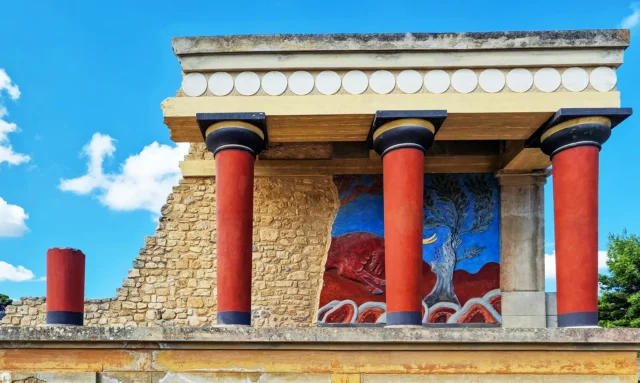


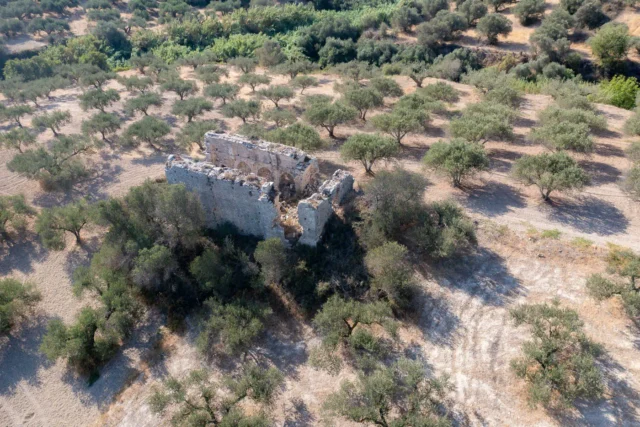
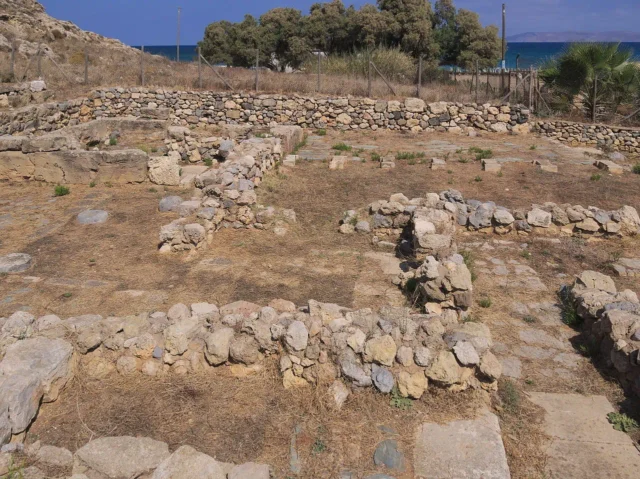


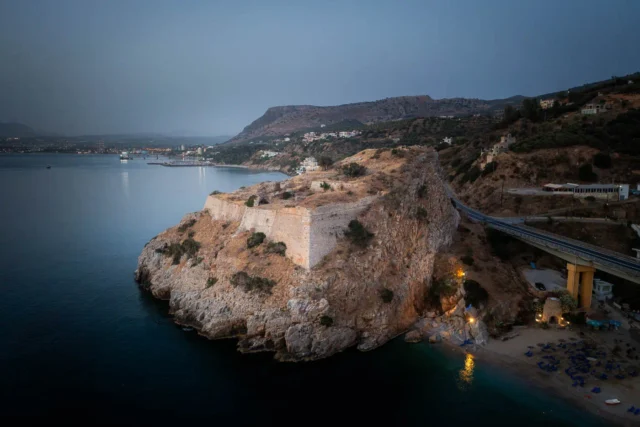
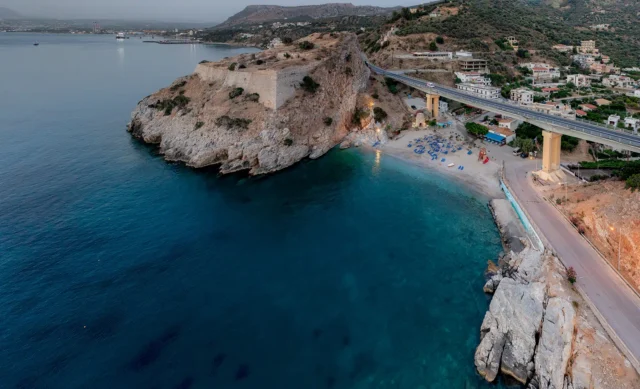
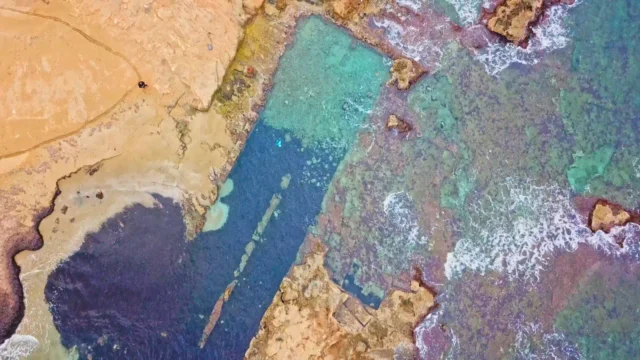

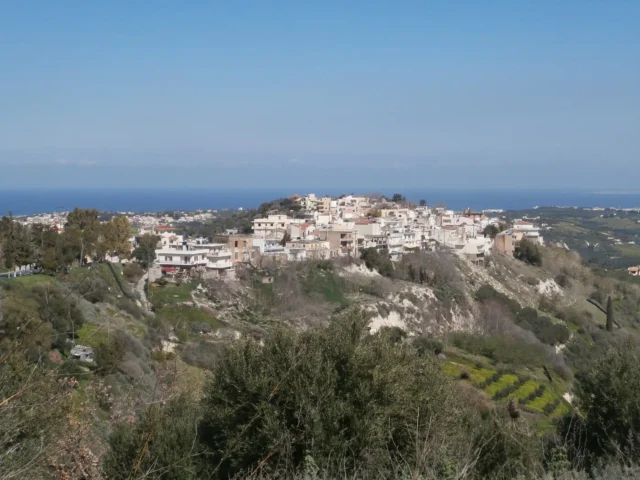

There are no comments yet.